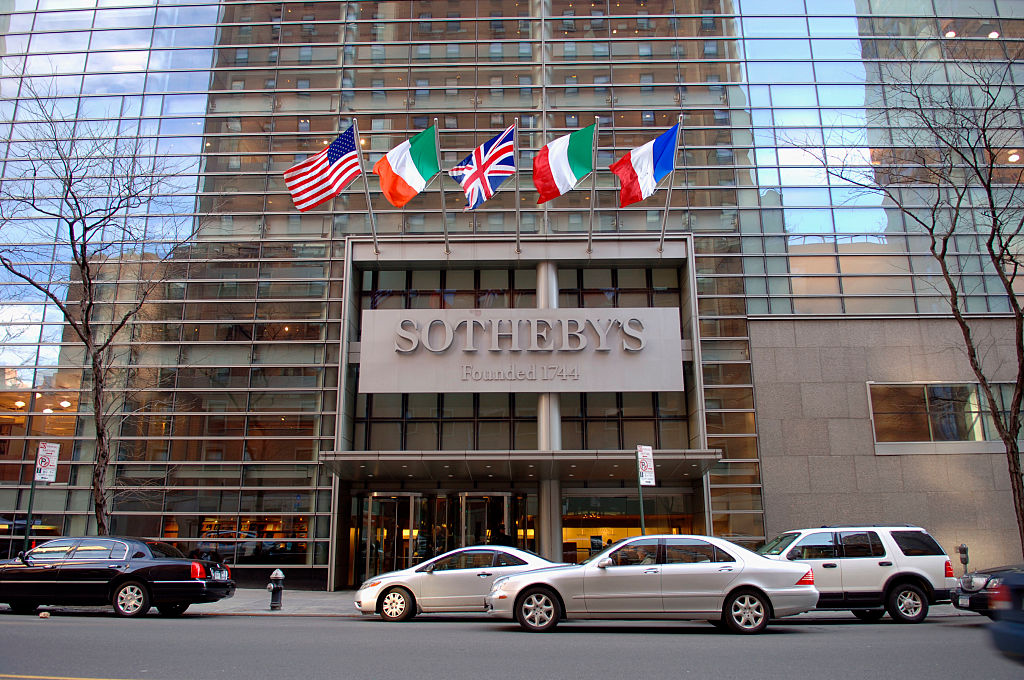Often, a high-profile trial, like the ongoing Accent Delight International v. Sotheby’s one, is more interesting for the details it reveals, rather than the actual proceedings. Such was the case on Monday, when the auction house’s head of private sales Samuel Valette was asked by defense attorney Marcus Asner to elucidate the way Sotheby’s goes about securing a client’s work for auction.
Money, of course, is often the driving force, but there is another M-word that, in the art world, can have almost as much sway: Marketing. Having one’s work featured on the cover of an auction catalogue is a great distinction; it is also often a bargaining chip with prospective consignors.
One of the works at the center of the case, Amedeo Modigliani’s carved stone sculpture Tete, was one of three works that graced the trifold cover of the catalogue for Sotheby’s November 4, 2014, Impressionist & Modern Art Evening Sale. This was, of course, after Blancafor, the company of Swiss art dealer Yves Bouvier, had purchased the sculpture from Sotheby’s in a private sale two years earlier for $41 million, only to sell it to Rybolovlev just a few months after that for $49 million.
During Valette’s testimony, he and Asner discussed the catalogue and how the auction house decides designations, or how the seller of a work is described in the provenance and works’ sections. These descriptions, like the cover photo, can be used to impart a degree of prestige to the work, Valette said.
According to Valette, titles such as “from an important collection” lend even more prestige to a given lot. But, because many collectors are single-minded when it comes to privacy and anonymity, the designations can only hint at where the work actually came from. That sometimes creates problems for the catalogue makers.
For example, if there are two European collectors consigning works in a sale. Sotheby’s cannot give both the same designation, lest a potential buyer think the two works are from the same collection. To avoid this, adjectives are swapped with elegant variation. That explains why some are designated “from an important European collection” and others from “a prominent European collection.”
In the case of the 2014 sale discussed Monday, Bouvier was selling two works apart from Tete (estimate $45 million – $65 million). Magritte’s La Folle du logis, a charming gouache featuring a lit candle, at the base of which are three eggs, all in a birds nest, with an estimate of $400,000 – $600,000, and Pablo Picasso’s 1964 quasi self-portrait, Buste d’homme, which carried an estimate of between $2 million – $3 million.
But, as Valette explained, neither the Magritte nor the Picasso work were as unique as Tete. In fact, Valette went so far as to say that those two pieces are the kinds of works you can see at any auction. But Tete was special. So, at least two of his colleagues at Sotheby’s discussed with Valette changing the designations of the two lesser works. To make things worse, there was a Giacometti sculpture in the sale, also from a European collector.
Last week, the plaintiff’s counsel, Daniel Kornstein, asked Valette why Sotheby’s didn’t just put who owned the work plainly in the catalog. It’s almost as if Valette didn’t understand the purpose of the question because, clearly that’s not how it’s done. Collectors want that veil of privacy. Today, Asner asked a similar question.
“Why not write, from the collection of a Swiss freeport owner?” Asner asked.
“Well, that wouldn’t help the painting sell, would it,” Valette said.
Tete was one of the marquee lots and, according to Valette, the point was to “enhance it’s uniqueness”. Slight differences were proposed: “property of a private European collection” and “property of a private European collector.”
“That’s already in use,” Valette’s colleague Daisy Edelson wrote to him in an email in reference presented to the jury. “I’ll do property from European private collection.”
In the end, for the Picasso and the Magritte, they settled on “property from a Continental collection.”
Kornstein, earlier in the trial, pointed out that, in an email Valette sent to Edelson, he mentioned “covering the tracks” by changing Tete’s designation, implying that Valette was being sneaky. On Monday, Valette explained that he was trying to cover the tracks from his competitors at Christie’s who, like himself, he described as “auction nerds.” They go through the catalogues, he said, and try to make connections from which they can deduce who is selling a work. (Full disclosure: this is a practice that arts journalists, also auction nerds, do.)
There is, however, one use of a designation that has popped in the trail that appeared suspect. After Bouvier had purchased Gustav Klimt’s Wasserschlangen II from Ursula Ucicky via a private sale brokered by Sotheby’s, it needed an export license to be shipped out of Austria. To get the license, a restitution claim with the heirs of the Viennese art collector Jenny Steiner and the Austrian government needed to be assuaged that the work would stay in Europe, likely because they wanted to be able to ask to borrow it for an exhibition. In a letter to the Austrian authorities shown to the jury, a representative of Sotheby’s assured them “it was going to European collector” who often lends to museums.
Valette has described Bouvier may times during the trial, most often by saying “I knew him to be a businessman.” An art dealer, sure. A collector, maybe. But mostly a businessman. Last week, when Kornstein showed Valette the letter, he asked what museums Bouvier had lent works to.
“Pinacothèque,” Valette said, referencing a gallery-cum-museum that Bouvier is a partner in.
“Any others?” Kornstein asked.
“Hm. Not that I know of.” Valette said.
Guess there’s a lot in a name, or sometimes nothing at all.
